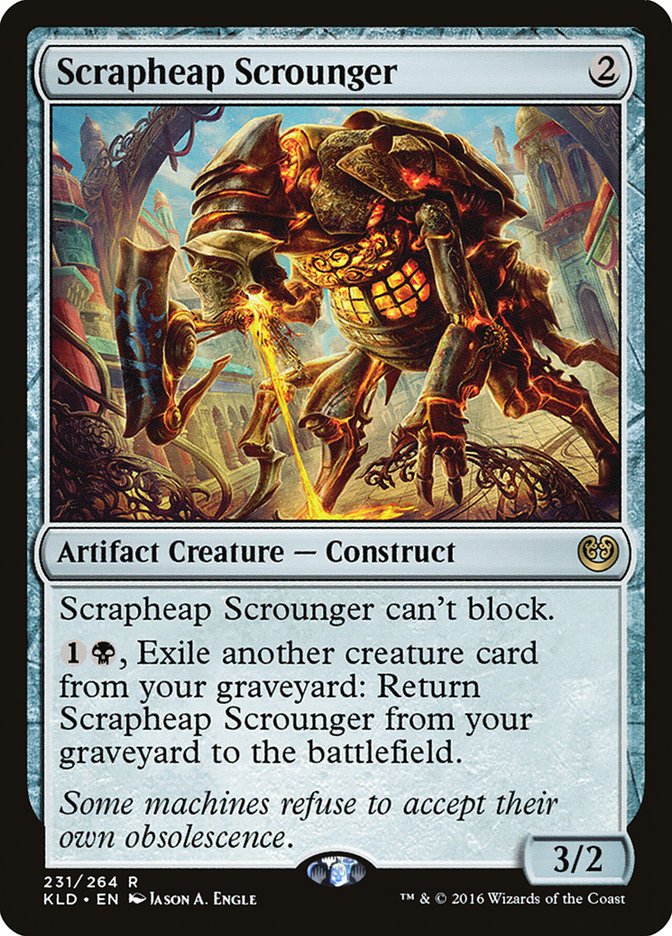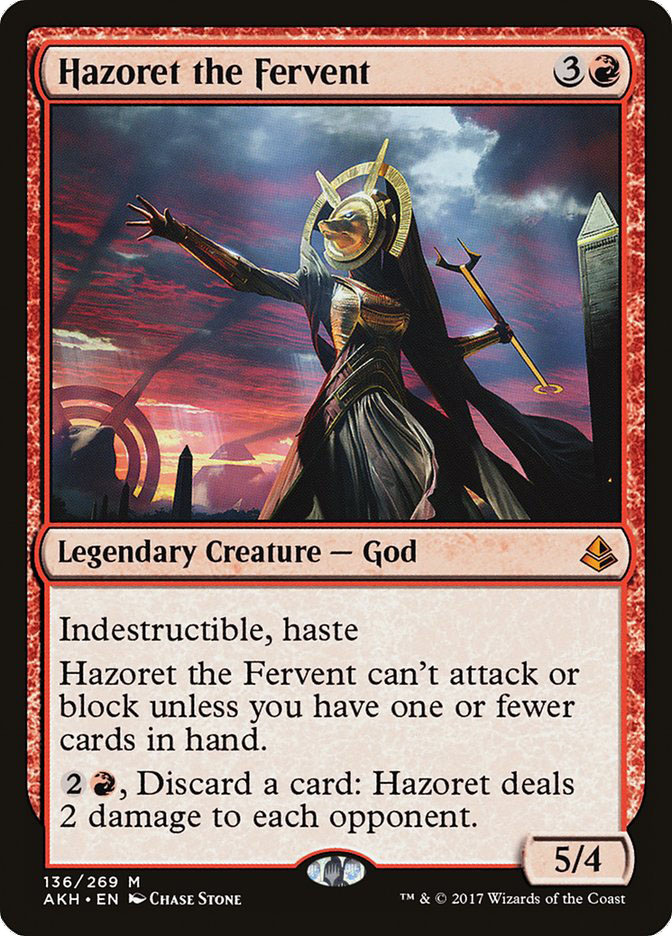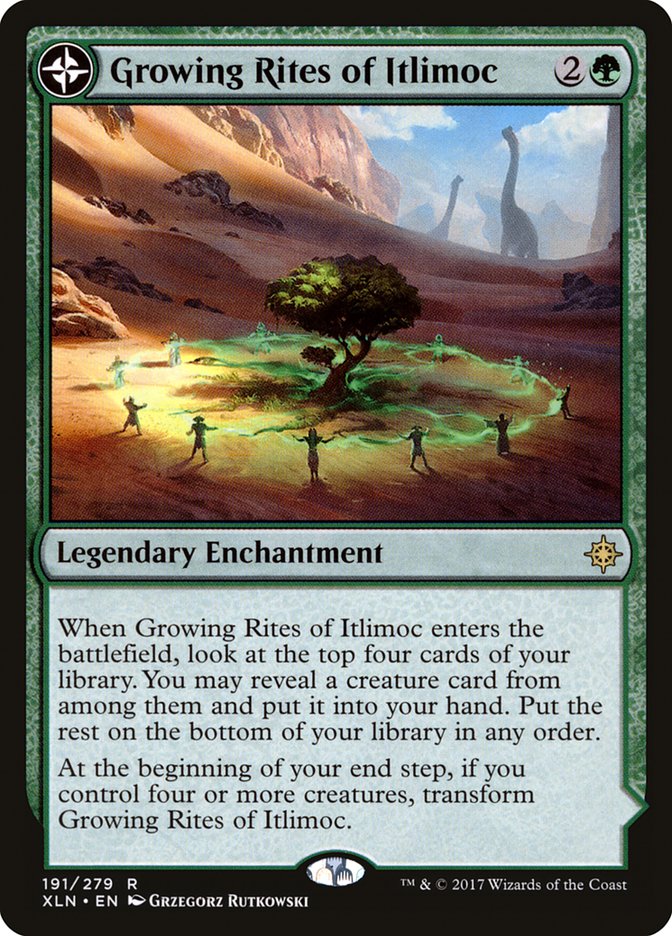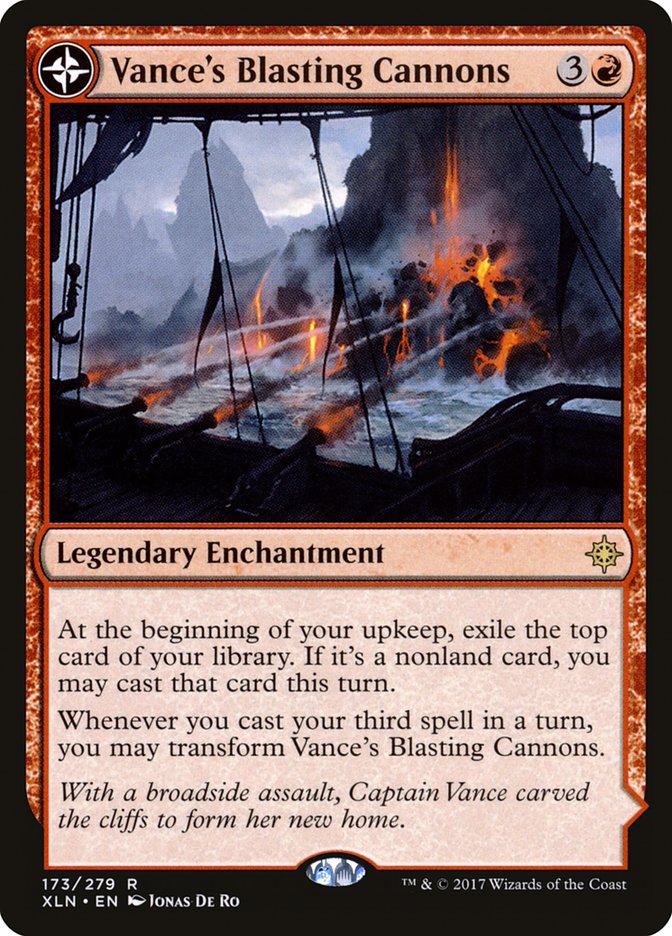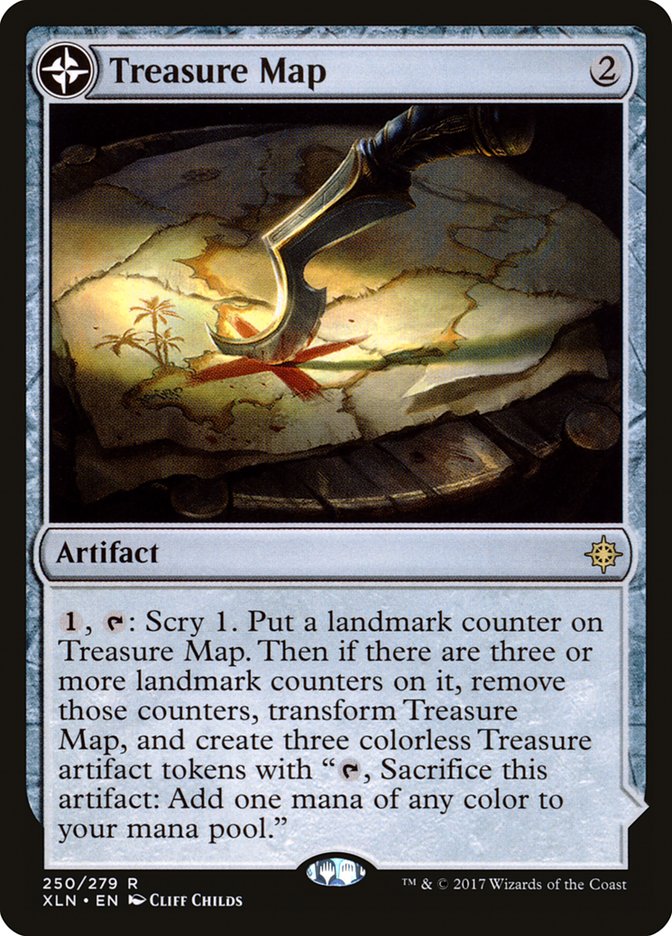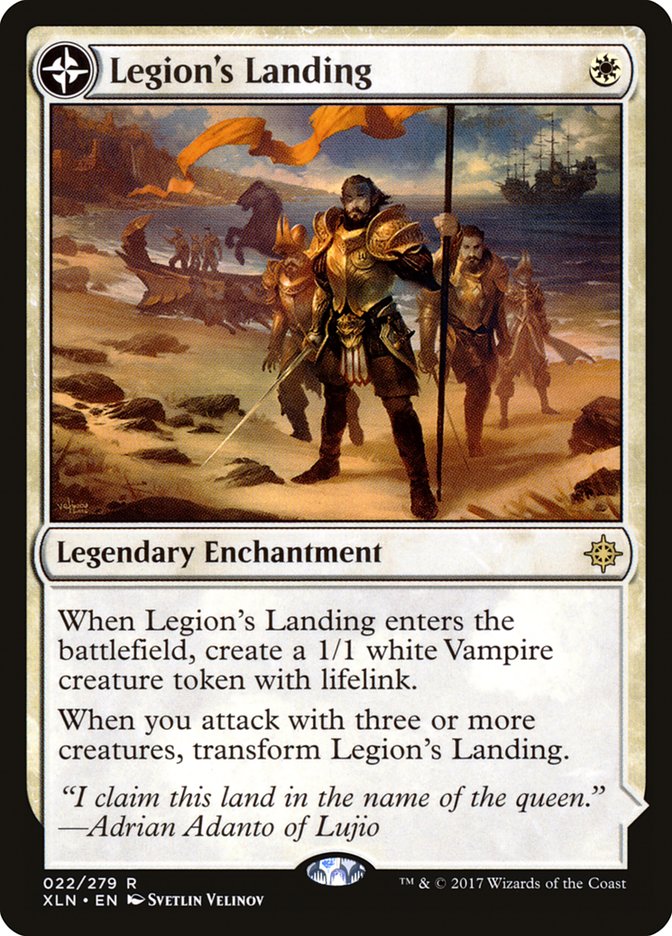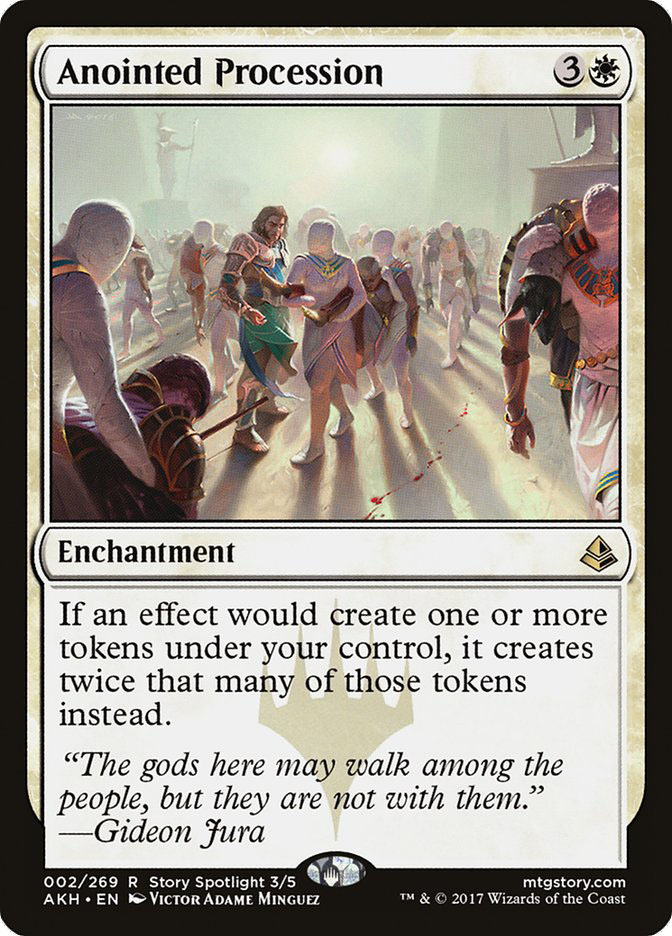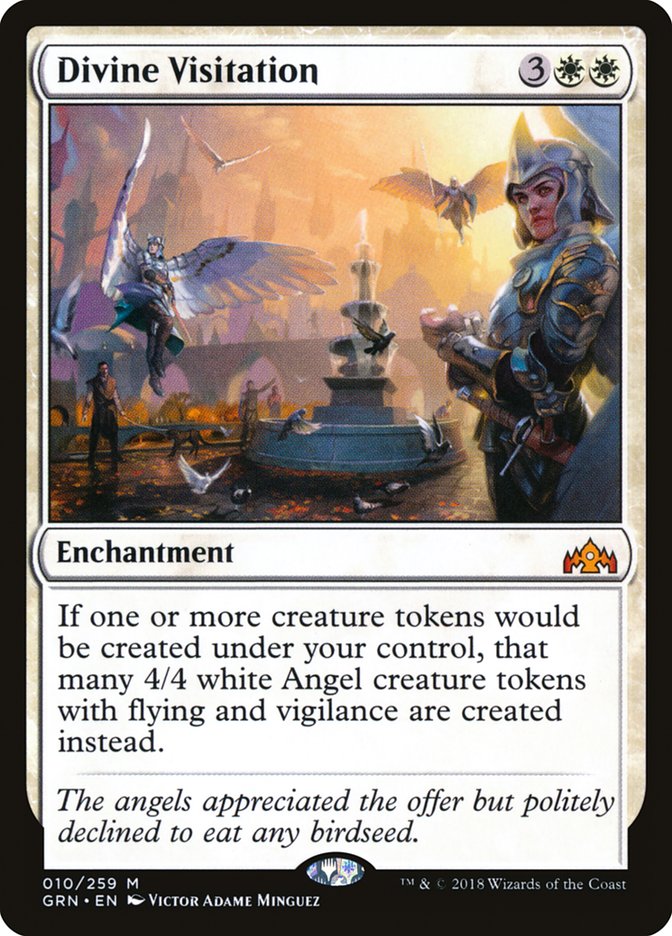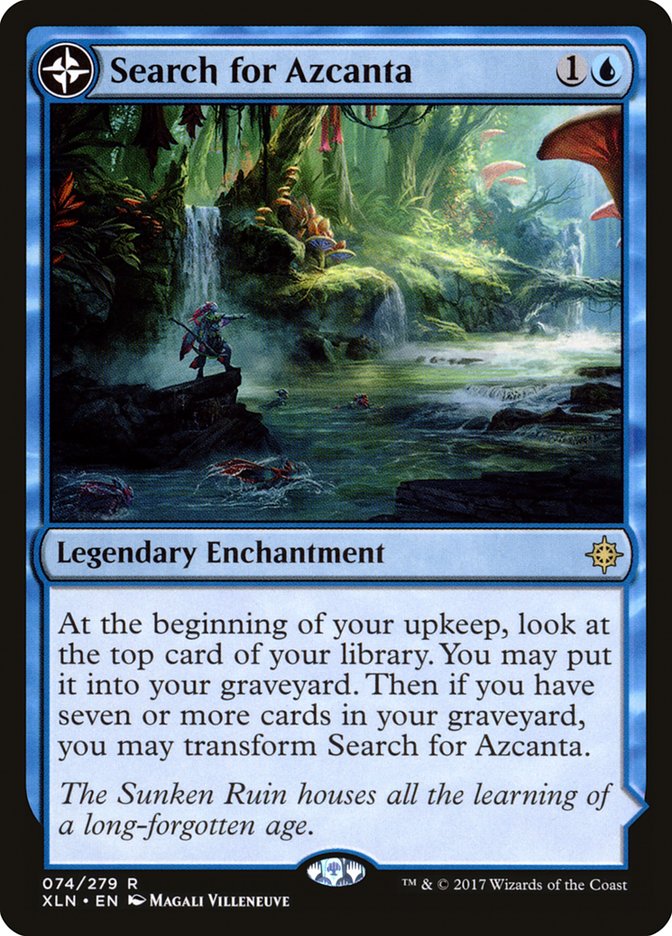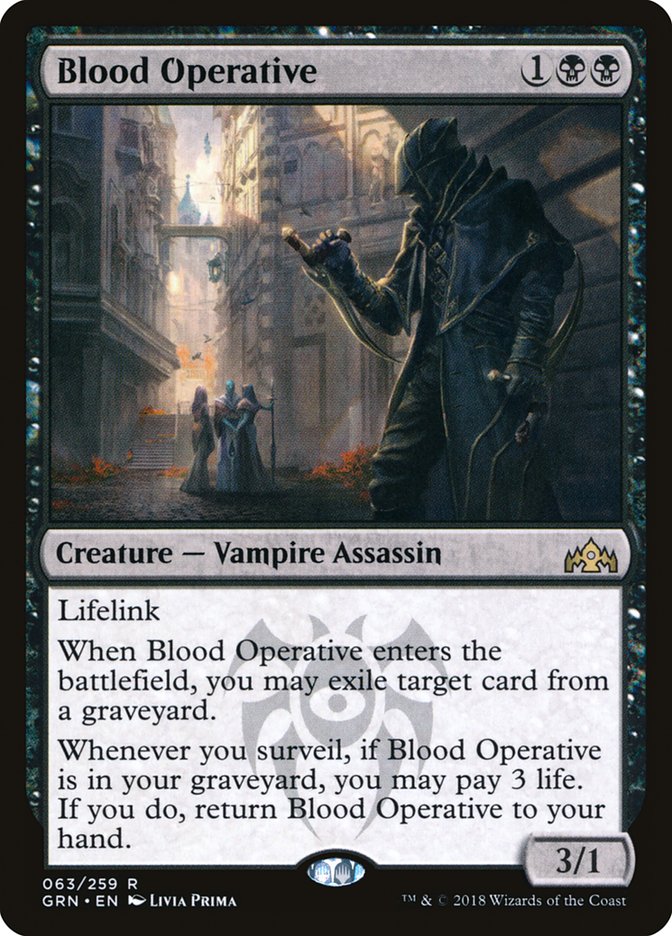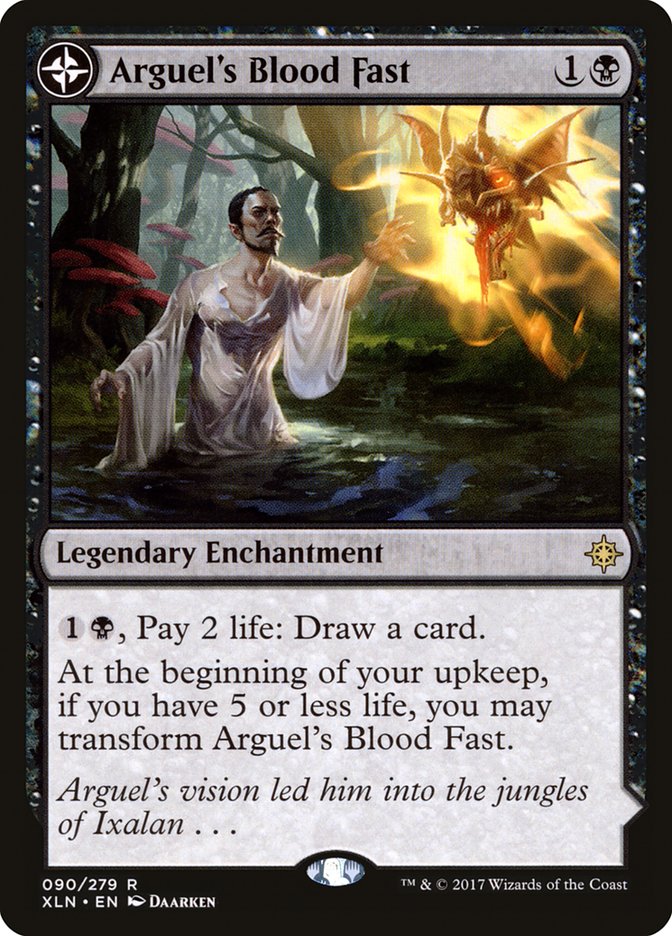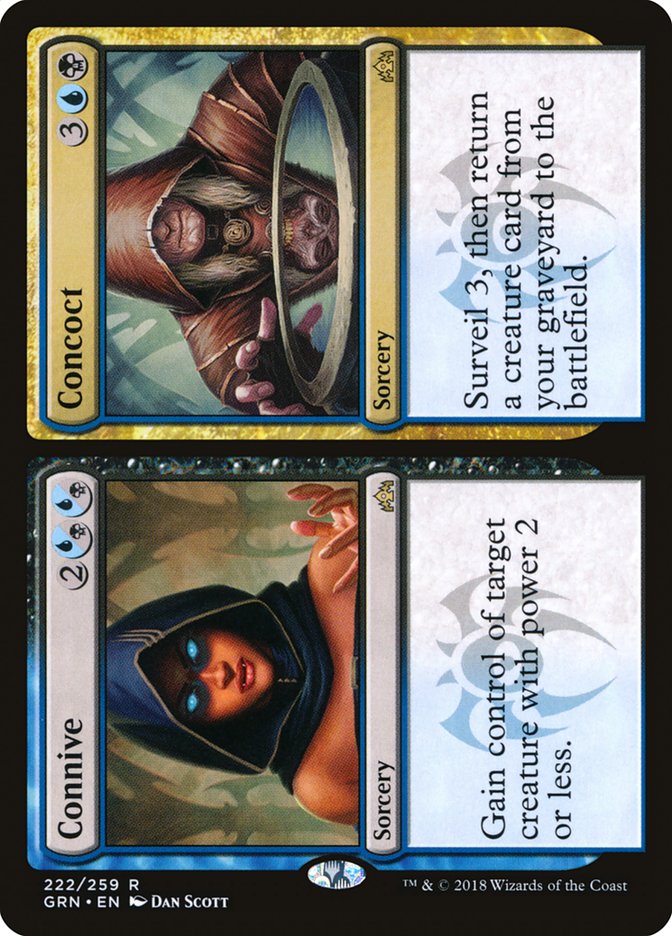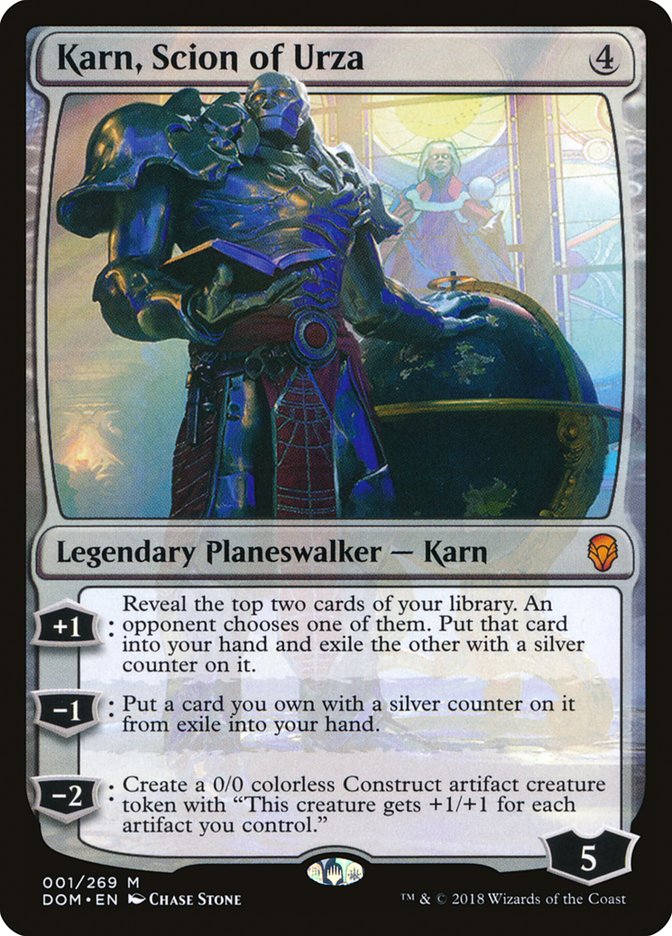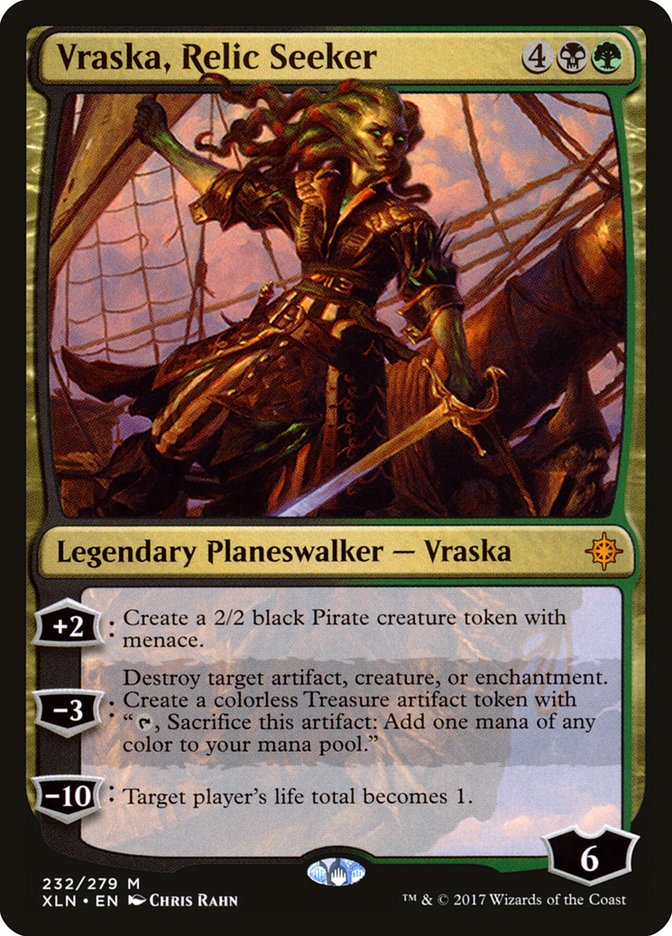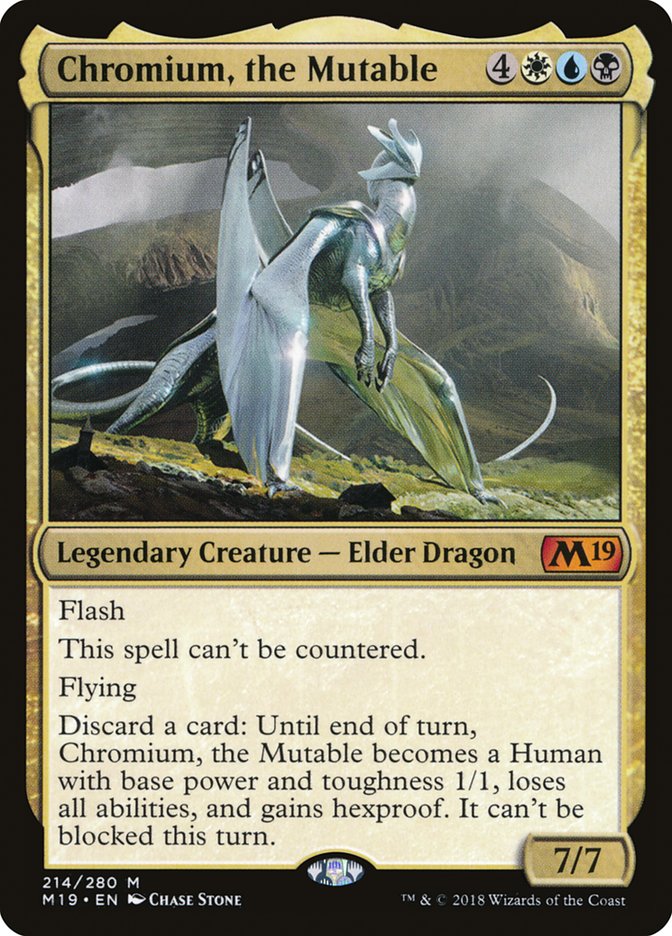Kaladesh
was a blindingly powerful block.
And it’s not like Amonkhet block lacked heavy hitters.
The upcoming Standard rotation is going to be big. It goes without
saying that the departure of the Kaladesh and Amonkhet
blocks leaves plenty of room for the new Guilds of Ravnica cards
to shine, but they aren’t the only ones. Plenty of cards from Ixalan block have been overshadowed by their powerful predecessors
for their entire time in Standard. I know the cards I have my eyes on:
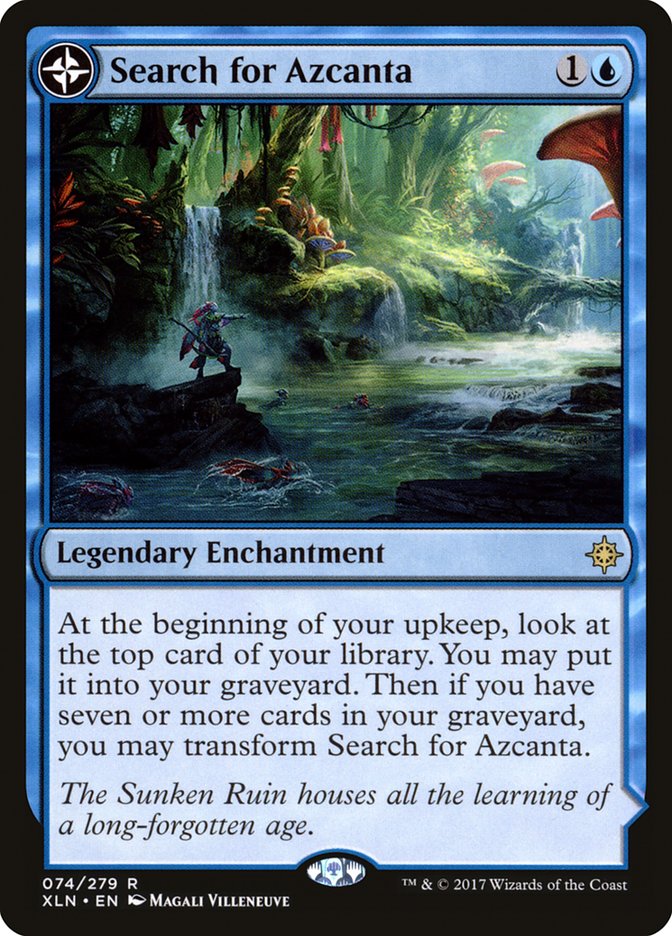
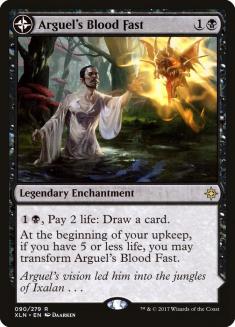
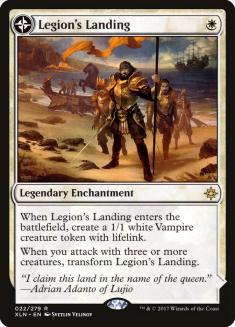
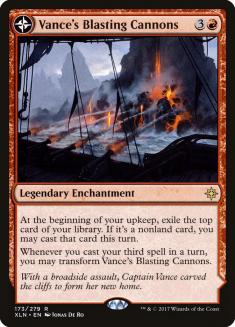
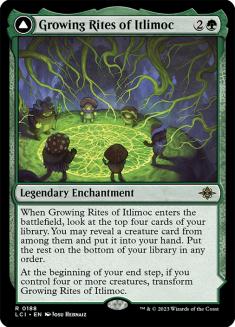

I know, I know. We’ve already seen plenty of the Ixalan cycle of
enchantments that transform into a land in Standard. Well, we’re about to
see more. Much more.
Broad Strokes
We already know these cards are good. Search for Azcanta has been an
absolute powerhouse in blue-based Standard control decks since its printing
and has even proven good enough to break into Modern and Legacy. Arguel’s
Blood Fast was a critical part of the Dimir Midrange deck that was my
weapon of choice for the last several months. Legion’s Landing hasn’t been
part of the metagame in the recent past but was the best card in multiple
fringe decks in months prior. Vance’s Blasting Cannon and Growing Rites of
Itlimoc have yet to see widespread play, but even they have made it into
competitive decklists from time to time.
We know these cards are powerful, but their destined improvement in Guilds of Ravnica Standard isn’t quite as simple as the departure
of Kaladesh and Amonkhet cards leaving a power vacuum
that needs to be filled. Sure, that effect will help these cards, but it
will, by definition, help every card in the new Standard environment. What
about these cards sets them up to pull ahead of the rest of the pack?
Let’s start with their defining characteristic: they transform into a land.
Forget that the land they transform into does anything special, right now
all that matters is that their transformation allows them to tap for mana.
Since printing, I have believed these cards would be reasonable Magic cards
if their land side didn’t tap for mana, if their unique activated ability
were all they were good for. Fact is, you’re rewarded twice for fulfilling
these cards’ transformation requirements. Once with their powerful
activated abilities and once with the simple fact that you’re now up a mana
source. Being up a mana source is a powerful, if boring, reward, especially in colors that don’t normally have access to ramp
effects.
I won’t bore you with too long of a history lesson, but Deathrite Shaman
just got banned in Legacy for largely this reason. The strength of
Deathrite Shaman was two-fold: it gave black a mana creature and was a mana
source that was good for more than just mana ramp. Versatile ramp effects
and ramp effects outside of green are scary, and this cycle delivers on
both.
Let’s talk a little about mana curves in different formats. On one end of
the spectrum you have Legacy, where efficiency is the name of the game.
Fair decks have curves that end at two or three, and one-mana spells are
the order of the day. On the other end you have Limited, where curves can
start on two and end on seven with a less than ideal spread in-between.
Mana use in these games is much less efficient as a rule.
Standard falls in between these two extremes, but much closer to the
Limited side of things than the Legacy side. Especially small Standard
formats like the one we’re about to enter. The card pool just isn’t large
enough to allow for decks with perfect curves, so we make do with what we
have. Decks with issues making use of all their mana every turn is the
rule, not the exception.
Mana ramp is powerful in these environments, but you can’t depend on being
able to make the best use of it. Decks just aren’t streamlined enough to
guarantee that. As such, sources of ramp that aren’t just ramp are
especially valuable. Pure ramp can be a liability as you can’t guarantee
hitting a curve that will take advantage of it. But incidental ramp gives
you the power of ramp without the liability, and that’s part of why this
cycle is so good.
This discussion about curves also gets at the heart of the second reason
that these cards are poised for success in Guilds of Ravnica
Standard: the power of mana sinks in small Standards. Like we talked about,
curves will be suboptimal. Using all your mana every turn is a huge
advantage, but you can’t depend on drawing the perfect curve to do so very
often. Enter mana sinks.
Having access to an ability that lets you profitably spend your mana even
when your curve isn’t lining up perfectly is huge in formats with smaller
card pools. Both players will often find themselves with mana to spare
every turn, and the player who can turn that spare mana into a beneficial
effect will find themselves with a large advantage. This cycle helps you
out there, too. Some have mana sinks on their front half and others after
they transform, but the fact that they both give you something to do with
your mana when you need that and give you extra mana when that’s what
you’re looking for means you’re covered no matter how the cards fall.
With these reasons in mind, let’s narrow down the cards we’re talking
about. Growing Rites of Itlimoc is a fine card, but it being green makes it
inherently less attractive than the other members of the cycle. Mana ramp
is a run-of-the-mill effect in green, making Growing Rites far less
exciting. Vance’s Blasting Cannons is difficult to transform early and has
no mana sink on its front side, unlike Arguel’s Blood Fast, meaning that
the Blasting Cannons don’t routinely benefit from either of the small
format effects discussed thus far. Growing Rites of Itlimoc and Vance’s
Blasting Cannons may see play if the format ends up a certain way, but they
aren’t predisposed to do so.
On the other hand, we can add a card to the cycle. Treasure Map isn’t an
enchantment, but in all other ways fits in perfectly with the Search for
Azcanta cycle. It has a mana sink on the front half and taps for mana on
the back. Sure, the activated ability of Treasure Map isn’t itself a mana
sink, but that’s okay. So then, four cards poised for success in Guilds of Ravnica Standard: Search for Azcanta, Arguel’s Blood
Fast, Legion’s Landing, Treasure Map.
We’ve actually already seen the power of these cards in small Standard.
When Ixalan released, the Battle for Zendikar and Shadows Over Innistrad blocks rotated out, leaving a five-set
Standard format. The four cards I’m highlighting saw a good deal of play in
that time, despite the sky-high power level of the Kaladesh cards
that they were competing with. Legion’s Landing and Treasure Map, in
particular, were happiest here, seeing plenty of play before additional set
releases and the pressures of a larger Standard pushed them into the
background.
Now we once again have a small Standard, and this time the power level of
the competition is somewhat dialed back. It’s time to see just how good
these four cards can look.
Legion’s Landing
Let’s just start with the good stuff and dive right in to the member of the
cycle I’m most excited about for this upcoming Standard.
Legion’s Landing was played in a few different Standard decks before
falling to the wayside, but the decks that played it alongside Anointed
Procession were the ones that used it to its fullest potential. Unlike the
aggressive decks that played Legion’s Landing, the Anointed Procession
decks could really make full use of the extra mana provided by a swiftly
transformed Legion’s Landing. Throw in the fact that Anointed Procession
made the activated ability on Adanto, The First Fort much scarier and you
had a fearsome one-two punch.
In my book, the version of that combination that is legal in Guilds of Ravnica Standard is even scarier. Spending four mana to
make a 1/1 is one thing, spending four mana to make a 4/4 with flying is
another thing altogether. If you manage to transform Legion’s Landing and
then land Divine Visitation, it’s pretty easy to imagine you winning
without ever casting another spell. Standard decks often have a problem
dealing with a never-ending stream of 4/4s.
Yes, this combination is powerful. Divine Visitation is a powerful card,
and Legion’s Landing is the perfect complement to it. This interaction
really highlights the small Standard strength of Legion’s Landing. A turn 4
Divine Visitation with token generation ready for the next turn is
unbelievably powerful, but playing dedicated ramp spells would dilute the
synergy. Legion’s Landing is a ramp spell plus synergy, allowing you to get
free wins off early Divine Visitations but still playing well in games
where things don’t line up so neatly. Perfect for small Standard.
Let’s take a look at a potential list highlighting this interaction:
This is the most single-minded way to push the Legion’s Landing / Divine
Visitation interaction. The deck only does one thing, but it does that one
thing reasonably well. Being mono-white, there’s no way to find Divine
Visitation to guarantee you see it every game, but the deck is aggressive
enough to be able to win without it.
One of the cool things about Legion’s Landing that this list highlights is
that we can get away with playing four five-drops with only 23 lands.
Legion’s Landing is the only member of the legendary enchantment cycle that
you can feel good about playing four copies of, as additional copies still
provide you with a 1/1 token at a fair rate. You aren’t excited about
drawing the second copy of Legion’s Landing, but neither are you
horrifically upset about it, and the first is important enough that playing
four is a slam dunk decision. Thus our 23-land deck gets to feel a lot like
a 27-land deck without the flood risk, and that’s quite powerful.
My guess would be this version won’t be the one that ends up as a player in
this upcoming Standard. Adding green into the mix gives too much for too
low a cost for me to think the mono-white version is correct. March of the
Multitudes, in particular, plays beautifully with both this strategy, in
general, and Legion’s Landing, specifically.
Search for Azcanta and Arguel’s Blood Fast
Of the four cards we’re looking at today, these are the two that are
probably the most familiar.
We’ve come to appreciate Search for Azcanta’s role in control strategies. I
expect that Search will still be exceptionally good in that role, but I’m
not interested in discussing it today. It’s already well-explored, and
there’s not a lot I can add to the conversation. I’m going to look at other
roles for Search but understand that its familiar role as a control card is
still going to be its most common and likely best use.
So, if we’re not trying to use Search for Azcanta in a control deck, what
are we looking to do with it? Well, it’s clearly out of place in an
aggressive strategy, so midrange it is. Search is interesting in midrange
decks because they can generally make great use of the mana generation part
of Azcanta, the Sunken Ruin. Even better, since midrange decks can afford
to be more proactive than control decks, they tend to be able to transform
Search faster than control decks and start benefiting from the extra mana
sooner. Because of this, midrange decks are better at capitalizing on the
things that make Search good in small Standard.
If an early transformation is what we’re looking for, it’s clear that we
should be looking to Dimir and the surveil mechanic. Surveil is a great,
reliable way to fill the graveyard enough to transform Search for Azcanta
while also finding plenty of gas with which to make use of our extra mana.
And while we’re doing all this surveilling, maybe we can get paid off in
another way as well.
If surveilling is something you’re actively looking to do, Blood Operative
is excellent. And if we’re playing with a three-mana 3/1 creature with
lifelink, I have an idea.
Alright, so things have moved kind of fast and come full circle. Maybe this
looks like a shoehorned way to play Search for Azcanta and Arguel’s Blood
Fast in the same deck, but I don’t think so. Unlike Legion’s Landing, it’s
very difficult to play the full playset of either Search or Arguel’s since
copies past the first provide little value. Playing with two members of the
cycle then lets us benefit from their early Standard power as much as the
Legion’s Landing decks.
Creatures (12)
Lands (26)
Spells (22)

First, let’s talk numbers. Two copies of Arguel’s Blood Fast is more or
less the standard number. The third copy of Search for Azcanta might be
ambitious, but this deck transforms Search fast enough that I think it can
get away with it. After all, getting a second copy onto the battlefield
once the first has transformed is completely fine, and drawing the first
copy is worth a lot.
Because we’re a Search for Azcanta deck, we want to play a relatively low
number of creatures to make sure our spell count is appropriately high. The
Blood Operatives are worthwhile, but after that we need creatures that can
end the game. Doom Whisperer and Dream Eater are where I went, powerful
creatures that can easily win a game on their own. After that, I felt the
creature count could go a little higher, so I was happy to include a pair
of Lazav. For more on Lazav, check out my
article
from last week.
After the creature base, the next thing to think about is what spells we’re
looking to find with Azcanta, the Sunken Ruin. Ideally, some of these
spells will double as win conditions to support our creatures. The Eldest
Reborn and Concoct are my frontrunners for that role. I went with Concoct
here for the additional surveil synergy and the built-in flexibility of
Connive, but it’s possible that The Eldest Reborn is just enough better
that it should have gotten the nod.
Discovery is another card I’m playing mostly due to Search for Azcanta.
Discovery isn’t bad and adds in to the surveil synergy of the deck, but
Dispersal is a reasonably powerful card that’s quite nice to have access to
in your Azcanta, the Sunken Ruin deck.
Both Search for Azcanta and Arguel’s Blood Fast look quite good in this
deck, and the chance to play both is certainly exciting. This deck really
cashes in on the ways these cards are good in small Standard. It’s looking
to get a ton of use out of both of their mana sink abilities and can pull
ahead of its opponents with the mana ramp off Search. Thanks to Blood
Operative and Doom Whisperer, you have a lot of control over your life
total and can transform Arguel’s Blood Fast at a time of your choosing for
best effect. Once transformed, there’s plenty for the Temple of Aclazotz to
do, including sacrificing big creatures to be rebought with Concoct.
Treasure Map
We’ll close things out with a brief discussion of Treasure Map in the
upcoming Standard format, but bad news: I don’t have much concrete guidance
to give on this one. By virtue of being colorless, there’s a lot of paths
you can go down with Treasure Map, and I don’t quite have the hubris to
think that I know the best one before the format even begins.
Of course, that doesn’t mean I have nothing to say.
Karn, Scion of Urza has been the traditional partner-in-crime of Treasure
Map since he was printed in Dominaria, but Karn’s stock has fallen
with the rotation of Kaladesh. It’s going to be a lot harder to
get good mileage out of Karn’s Construct tokens without all the very good
artifacts we took for granted from Kaladesh. This doesn’t mean
that you can’t play with Karn in your Treasure Map deck, but you can’t do
so indiscriminately.
If you want to play Karn, you probably want the full playset of Treasure
Map. There’s fewer good artifacts floating around, but that doesn’t mean
you can’t max out on the ones you do have. If you don’t think your deck is
interested in all the Treasure Maps, consider that Karn may not be what
you’re looking for.
You’re also going to want to be somewhat defensively-oriented and have a
plan for how you’re going to use your extra mana. Your Karns are not great
at making Constructs, so that’s not going to be the common use case. You
want to be able to keep Karn on the battlefield for multiple turns and be
able to turn the extra lands you end up with in to an actual advantage.
Treasure Map isn’t enough of a mana sink to do the whole job itself,
although you should be hesitant to use Treasures for mana and not cards off
Treasure Cove.
A defensively oriented deck is no problem, as that’s where Treasure Map
shines. You don’t have to be full-on control, but you’re certainly not
trying to play Treasure Map in your aggro deck. Midrange is where Treasure
Map really shines, which brings me to my next point: splashing.
You can cast Treasure Map no matter what colors you’re playing, and
Treasure Map will help you cast any cards you might be splashing. Until Ravnica Allegiance arrives with the rest of the shocklands, mana
for some color combinations is going to be a little rough. This means
otherwise powerful multicolored cards may see less play then they otherwise
would, but Treasure Map can unlock the power of these cards in your deck.
Playing Treasure Map in part to enable a splash also really emphasizes the
small Standard strength of the card. I’m envisioning a three-color deck
with a slightly unstable manabase that often has trouble casting its spells
in the early game. Treasure Map works as a mana sink in this stage of the
game, giving you something to do while your manabase comes together.
Better, it’s something to do that actively helps you find the cards you
need.
In the mid to lategame, decks like this are looking to slam powerful card
after powerful card. There, the mana acceleration of Treasure Cove really
comes into play, especially when combined with the Treasures put onto the
battlefield by the transformation. The dual mana sink and mana accelerant
nature of Treasure Map really shines in haymaker style multi-colored
midrange decks.


